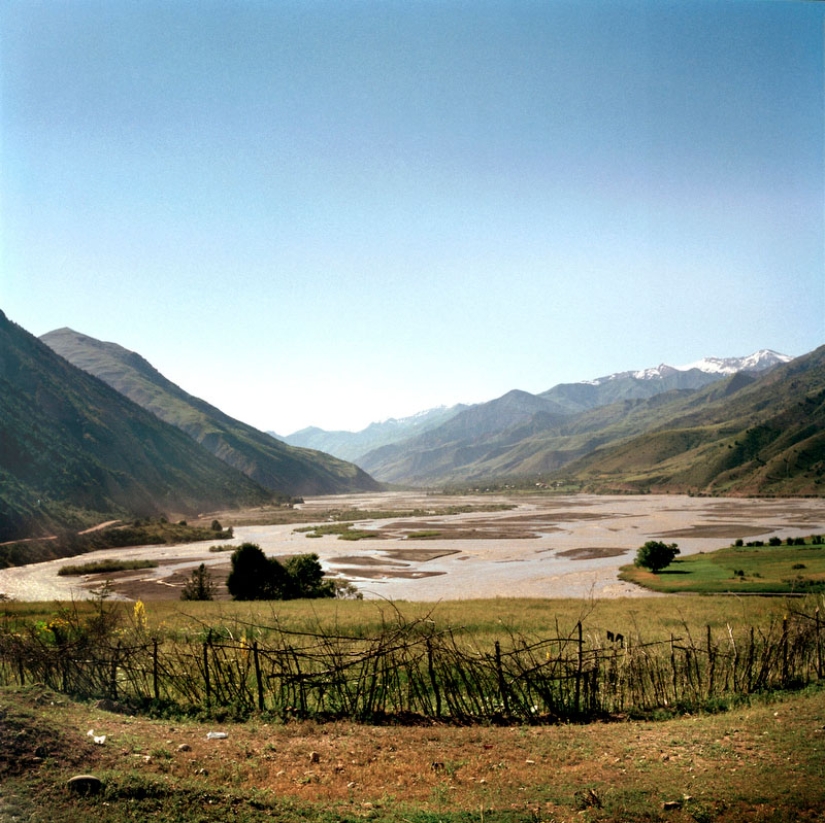How the women of Tajikistan live
By Pictolic https://pictolic.com/article/how-the-women-of-tajikistan-live.htmlPhotographer Mashid Mohajerin was eight when she and her family left Iran after the revolution. She still remembers how sad it was for her to leave her native places and how difficult it was to get used to life in a new country. First she lived in Pakistan, then in Belgium and finally in New York. While working on another project in Moscow, she met migrant workers aged 17 to 55 at the market. They all came from Tajikistan, and no one took their wives or children with them, leaving them in their native land, which at the same time seems so alien.
 Photo: Mashid Mohadjerin
Photo: Mashid Mohadjerin

Torsonmoh is the chairwoman of the Tirchit organization, which has 85 members, in Khorog. The members of the group bring income to their village, while at the same time inspiring other villages in Tajikistan.

This girl lives in the slums of Khorog. She became a victim of a human trafficker when she was trying to find a job abroad.

The husband of this woman left the village of Nau eight years ago — he left for the construction of a cottage after reading the newspaper "Suburban real estate: private ads". For the first few years he sent money for his wife and their three children, but for the last two years she had not heard from him.

Zarifa, Sahiba and Golfina work in the field in the morning, and their mothers sell vegetables at the market in Nau.

The remains of military equipment are an echo of the 1992-1997 civil war, in which tens of thousands of people died.

Firoza works 16 hours seven days a week on land that she and her neighbors rent from a collective farm. Cotton is the second largest export product in Tajikistan.

This picture was taken at a women's clothing factory. Women sew clothes here for special occasions, such as weddings and engagements. They hope that this enterprise will help them keep their husbands' houses in order.

A veteran of the Great Patriotic War with his granddaughter in the village of Andarro. The girl's father left for Russia before she was born and has not yet returned.

Elderly people nostalgically recall the times of the Soviet Union, when life was easier for them.

Dashteshor has great potential for the construction of a hydroelectric power station, but many parts of the republic still remain without electricity and heating in winter.

Latofat's husband left his native village of Andarro together with 280 other men and left Tajikistan to work in Russia. According to rumors, he already even has a credit card. The village receives money from the mountain settlement support program, which pays attention to the development of villages so that their residents can pay for air travel.

In an apartment in Khujand.

A young shepherd in Garma takes care of a cow — the only source of income for his family.
Keywords: Women | Migrants | Tajikistan | Photographer
Post News ArticleRecent articles

When we come to a city as a tourist, we see its front part. But behind the beautiful facades remains not only boring and ugly, but ...

The number of materials with the title "Photos of celebrities that you haven't seen yet" is estimated in dozens (seriously, they ...
Related articles

For some reason, when they talk about the compatibility of women and IT technologies, men remember stupid jokes. Although the era ...

Steve Hanks is rightfully recognized by art critics as one of the best watercolorists of our time. The details, colors, and ...

In the history of domestic intelligence, there are many women whose exploits are classified even after many years. But their fates ...

Surrealism is fascinating mystery their images and symbols. The art of the surreal photos by Franz Fiedler surprises and delights ...